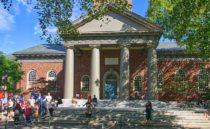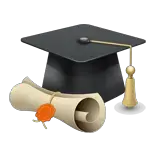
Everybody Wants to Study at Harvard University, but not everyone can afford to pay the $50,000 Tuition fee per Semester.
One of the solutions to this is to subscribe to scholarships. Here is the top 15 Harvard Scholarships List for International & African Students.
Harvard University is the best university in the world. In the world ranking, Harvard University is the first position. This rank 1 university has always been the dream of college students.
But, it is very difficult to get the chance to study at Harvard University. All the talents and extra-ordinaries from all over the world strive to get enroll in Harvard University. That is what makes it very competitive to get admitted to Harvard University.
However, this article will outline the best Harvard scholarships list and guide on how to go about the scholarships. So relax and read on.
About the Financial Aid Programme of Harvard University.
Harvard University seeks the best students for study regardless of their ability to afford the fees or not, the Financial Aid Programme of Harvard University is committed to meeting a hundred percent of the financial needs of the students for the four years of study.
The Financial Aid Programme of Harvard University works in close alignment with the family of the admitted students of Harvard University to ensure that the student can afford to attend Harvard University.
Once the student is admitted, the Financial Aid Programme of Harvard University checks with the families of the students to determine the financial need of the student and the family’s expected contribution which is often 0 – 10 percent of the family’s income.
The program does not demand contributions from families with an annual income of below sixty-five US dollars. Families with an annual income between sixty-five US dollars and one hundred and fifty thousand US dollars will be required to make a 0 – 10 percent contribution to the fees of their ward.
Families with an annual income above hundred and fifty US dollars would be asked to contribute more than ten percent of their ward’s fees but depending on their individual circumstances.
The program does not play partially as the American students receive the same exact amount as the international students. Circa, seventy percent of the students of Harvard University receive some form of financial aid and about sixty percent receive need-based scholarships and pay an average of twelve thousand US dollars every year.
About two percent of parents pay nothing at all with no loans required. The participants of this financial aid are expected to contribute to the cost of their educations by taking up summer employment and through term time.
PRINCIPLES OF AWARD
The Financial Aid Programme of Harvard University follows two key principles for the award of financial aid. We follow two key principles of which one is that admission is not based on the financial need of the applicant and another being that the financial aid is awarded based on the needs of the student and not based on merit.
The Financial Aid Programme of Harvard University sustained by the Harvard Financial Aid Initiative aims to make Harvard University accessible to any student who is admitted.
PROGRAM HELP
The staff of the Financial Aid Programme of Harvard University is available to respond to applicants all year round. The staff is also available to help the student submit an appeal for award reconsideration in the case of adverse financial changes in the family of the student.
For more details, please check out this financial aid fact sheet.
Further information about financial aid can be found here.
To find out about the Research grants at Harvard University, Cambridge please visit the school website or follow the direct link.
HOW TO GET A SCHOLARSHIP TO HARVARD MEDICAL SCHOOL
There are certain things to put into consideration when applying for a scholarship at the Harvard Medical School. First off, you should know who you are, and then further look for scholarships and grants that best suit your application and interests.
The things the applicants should put into consideration should cover their individual persons, their academic standards and their academic records, their local environment, and the global opportunities.
Furthermore, as a scholarship seeker, you need to consider various options and multiple identities that would best suit various scholarship schemes, such as being a female, veteran, religious affiliation, LGBTQ, fraternity, sorority, service memberships, athlete, differently-abled, or first-generation college student.
Another thing worth considering is the locality and geographical location. As a scholarship seeker, you should check where you live or where you have or had a residency.
Another important thing to consider is nationality. As a scholarship seeker, you should also consider where you are from. The countries where you have full or half citizenship.
One of the major things to consider in your search for a scholarship is your research and academic interests.
Personal workshop for scholarship opportunities: after taking note and consideration of all these points listed above, you then start to organize your opportunities. Create a mini journal or template with a list of scholarships and when they are due and their deadlines.
Take note of the smaller scholarships, they tend to be less competitive than the larger ones and are less likely to have high standards of meeting their requirements than the large scholarships.
Get your applications ready: ensure that your resume, transcripts, personal statement, and other application documents are ready. Review them over and over again. Ensure that the persons to write your letters of recommendation are ready to work with you. Help them by providing your resume, transcript, and a brief statement of your career aims.
Here is a list of scholarships available at Harvard University, including application details, deadlines, and eligibility criteria.
#1. Academic Scholars Award:
the Academic Scholars are a community of select individuals with curiosity, resourcefulness, originality, and initiative, who provides promising work as a foundation for exceptional careers in major universities or international institutions.
This grant is awarded by Harvard University. The benefactors are appointed for an in-residence, postdoctoral fellowship at the Harvard Academy for International and Area studies at Harvard University, Cambridge, MA and is for two years.
The grant is worth substantial financial and research assistance for undertaking sustained projects of research and/or acquiring accessory training in the chosen field of study of the benefactors.
A distinguished group of senior Harvard University faculty members, known as the Senior Scholars, act as mentors to the Academy Scholars to help them achieve their intellectual potential.
The Selection Committee considers all applicants as one and awards about 4 to 5 applicants each year. The grant is worth $67,000 and is available for a duration of two years.
Type of award: available for a doctorate degree and post-doctoral students
Acceptance: this award is accepted in the United States of America
Eligibility: This award is available for international students regardless of nationality, gender, or race who have a recent Ph.D. or an equivalent professional school degree and doctorate students in the social sciences or law.
Deadline: the deadline for application is October 1, 2022.
APPLICATION DOCUMENTS
Application documents: the documents for application are a Curriculum Vitae or resumé which should include a list of publications, a cover letter that states the academic field of the applicant, country or region of specialization, and the proposed research topic.
A research proposal with a maximum of 2500 words which includes intellectual objectives and planned methodological and disciplinary work, a copy of the applicant’s Ph.D. program transcript, and three letters of recommendation uploaded through the online application and addressed to the ‘Selection Committee.
These application documents are submitted online as PDF documents and accessed through The Harvard Academy website on the option of ‘Apply Online. For further questions, please send a mail to [email protected].
- Financial Aid Programme of Harvard University: this scheme offers special financial aid, scholarships, and fellowship programs that provide financial support for the undergraduate and graduate students of Harvard University, Cambridge. The office of Financial Aid is in each separate school and offers most of the financial support available for students of Harvard University. The General Scholarships are programs managed by the Financial Aid Programme of Harvard University since they cross the separate boundaries of the school requirements. As an applicant, discover the financial aid programs offered at your school and then return to the office of the Financial Aid of Harvard University to find out whether the office has programs that might support the studies of the applicant. The direct link for the application is https://college.harvard.edu/financial-aid
The process of Application for Financial Aid the Harvard University
- Contact the financial aid office at the school at Harvard University that you plan to apply to.
- Apply for financial aid through the school at Harvard University that you plan to apply to.
- Return to the Financial Aid of Harvard University for additional resources you might be eligible to receive. (Link to check: https://college.harvard.edu/financial-aid)
#2. SCHOLARSHIPS FOR THE HARVARD MEDICAL COLLEGE
The Harvard Medical School Financial Aid Office controls a number of Outside Scholarship Opportunities for studies at the Harvard Medical School. These scholarship opportunities help students pay their fees at Harvard Medical School, either by subsidy or full grants. However, most subsidies are obtainable.
The schemes can help to minimize the debt of educational loans and can replace the calculated expected parent contribution or replace loans, usually starting with the least favorable loan in the award package of the student’s financial aid.
The Institutional scholarship is the last source of funding to be replaced by these External Scholarship schemes.
The Harvard Medical School Financial Aid Office also has a small library with resource directories that aid students in sourcing external sources of aid for their studies at Harvard Medical School.
Some of these External Scholarships are.
#3. Joseph Collins Foundation Scholarship
The Joseph Collins Foundation avails a number of scholarships that are limited for medical students of Harvard Medical School who have dire financial needs and are aiming at specializing in Neurology, psychiatry, or general practice.
The applicants also have to demonstrate an accomplishment in cultural pursuits either in arts, music, theatre, writing et cetera. Candidates are to be nominated by the Harvard Medical School Financial Aid Office.
There is a preference for second-year students of the Harvard Medical School. The Joseph Collins Foundation gives preference to students who plan to obtain a medical degree over four years without interruption.
The Harvard Medical School Financial Aid Office solicits nominees from the student body in January of each year.
#4. National Medical Fellowships (NMF)
The National Medical Fellowships (NMF), offers grants available for African American, American Indian, Mexican American, Alaska Natives, Native Hawaiian, and Mainland Puerto Rican students in their first and second-year studies at Harvard Medical School who have dire financial needs. Further information can be found at https://nmfonline.org
- Federal Programs with a Commitment of Future Service
- F. Edward Hebert Armed Forces Health Professions Scholarship Program (AFHPSP)
The Armed Forces Health Professions Scholarship Program sets out to recruit personnel to solve the problem of the shortage of physicians serving in the military departments.
The grants are offered through the Navy, Air Force, and Army and support medical students of Harvard Medical College.
The scholarship covers the tuition and other required fees, and a monthly stipend for living expenses.
The stipend, however, is subject to tax by the state or federal government and must be reported on the tax returns of the benefactors. Every year, each benefactor is required to spend forty-five days on Active Duty for Training (ADT) with full pay and allowances.
The benefactors of this grant are under a minimum service obligation of two or three years depending on the area of specialization.
One year of obligation is demanded for each year the student receives the scholarship from the Armed Forces Health Professions Scholarship Program.
The benefactors must apply for residency programs in military facilities and are selected for military or civilian programs based on the needs of the military departments.
Eligibility:
Students must be U.S citizens and must be enrolled in, or who had just received a letter of acceptance from a medical school.
The applicant must also meet the eligibility terms for appointment in the US Armed Forces and must complete the application process through the military branch that is of interest to them.
The Armed Forces Health Professions Scholarship Program covers most of the required costs for the student’s study years.
The benefactors do not need to apply for another grant or scholarship. However, any student who feels the need to apply due to the provided funds being insufficient for their financial needs would need to apply for a student loan to meet up with the financial needs.
The funds for this purpose are generally from the Federal Direct Unsubsidized Loan Program.
#5. National Health Service Corps (NHSC) Scholarship Program
Due to a need to address the deficiency in the number of medical personnel in certain areas of the United States of America, the National Health Service Corps Scholarship Program was created and is aimed at students who intend to train and practice in primary care specialties.
The scholarship is worth the tuition fees, the required other fees for the year, a monthly stipend for 12 months, and a single pay for school supplies like books, equipment, and other supplies for the school year.
This scholarship is available for a maximum of four years and can be renewed each year without fresh competition.
For each year a student benefited from the program, the student owes one year of service in the future to provide primary care service in a Health Professional Shortage Area as assigned by the National Health Service Corps.
The minimum obligated time is for two years. For more information and to apply, call (800) 221-9393.
SCHOLARSHIP AT HARVARD UNIVERSITY FOR AFRICANS
- Landscape Architecture Foundation Awards: these scholarships are available for Landscape Architecture undergraduate and graduate studies.
Scholarship website: www.lafoundation.org - American Association of University Women: this scholarship is awarded to women who are not citizens of the United States or permanent residents. It is available for both graduate and postgraduate studies.
Scholarship website: www.aauw.org - Aga Khan Scholarship
Scholarship For Developing Countries
This scholarship is for students from developing countries who cannot sponsor their education. It is available for Master’s degree studies for students with outstanding academic performances.
Scholarship website: www.akdn.org
- Bergmeyer Scholarship: This scholarship is available for students intending a career in Interior Design and is worth $2,500.
Scholarship website - Diversity Advancement Scholarship: this is available for students from a minority race or ethnicity who are aiming for an architectural career.
Scholarship website - Vectorworks Design Scholarship: This scholarship is for graduate and undergraduate studies for design programs.
Scholarship website: www.vectorworks.net - Edmond J. Safra Graduate Fellowship: this grant is available for graduates and professional Harvard students with outstanding academic records who are engaged in writing dissertations or major research topics in practical ethics.
Scholarship website.
- Graduate Consortium on Energy and Environment Fellowship: this scholarship is available to all doctorate students of Harvard who are working on energy issues.
Scholarship website.
- Institute of International Education: this offers scholarships by international fellowships, scholarships, loans, professional development, etc.
Scholarship website: www.iie.org - International Education Financial Aid offers a comprehensive search for international scholarships.
Scholarship website: www.iefa.org - Fulbright Program/Institute of International Education (IIE): This scholarship is available around the world for national citizens.
Scholarship website: www.iie.org
- International Facility Management Association Foundation: offers scholarships for undergraduate and graduate studies in facility management or related fields. Award is based on merit.
Scholarship website: www.foundation.ifma.org
- Kate Neal Kinley Memorial Fellowship: this is an international scholarship that is offered on a yearly basis.
Scholarship website: www.faa.illinois.edu
- Margaret McNamara Memorial Fund (The World Bank): This grant is for students from developing countries accepted throughout the United States or Canada and is worth $12 000 for each benefactor.
Scholarship website: www.mmmf-grants.org
- Oppenheimer Memorial: This scholarship is open for South African citizens and students with outstanding academic records and financial needs have a higher edge of the award.
Scholarship website: www.commonwealth.gostudy.net - Zimmer Gunsul Frasca Architectural Scholarship Fund: This scholarship is open for students applying for a Master’s degree in Architecture. It is worth $10,000 and an opportunity to be an intern at Zimmer Gunsul Frasca Architects LLP.
Scholarship website: www.zgf.com - Rotary Foundation Scholarships: offers various scholarship opportunities for graduate studies in various disciplines.
Scholarship website: www.rotary.org - SARA Education Fund: This scholarship is open to all students of Architecture.
Scholarship website: www.saraeducationfund.org/student-scholarship - World Bank Graduate Scholarship Program: This scholarship is for non-US citizens.
Scholarship website: web.worldbank.org
FAQS
Can you get a full scholarship at Harvard?
Harvard University Scholarships (Undergraduate)
Also, undergraduate students and domestic students are treated the same with regard to receiving scholarships. Students whose families earn less than $65,000 will receive fully-funded scholarships (full tuition, room, and board)
What scholarships does Harvard offer?
Does Harvard offer scholarships? No. As an Ivy League institution, Harvard does not offer athletic or academic scholarships to students. However, Harvard does provide need-based financial aid to those students who demonstrate financial need.
How do international students get scholarships?
An international student can also apply for scholarships through global organizations and through the federal government. Two of the best-known government-funded scholarships, the Fulbright Foreign Student Program and the Hubert H. Humphrey Fellowship Program, accept applications from international students each year.






